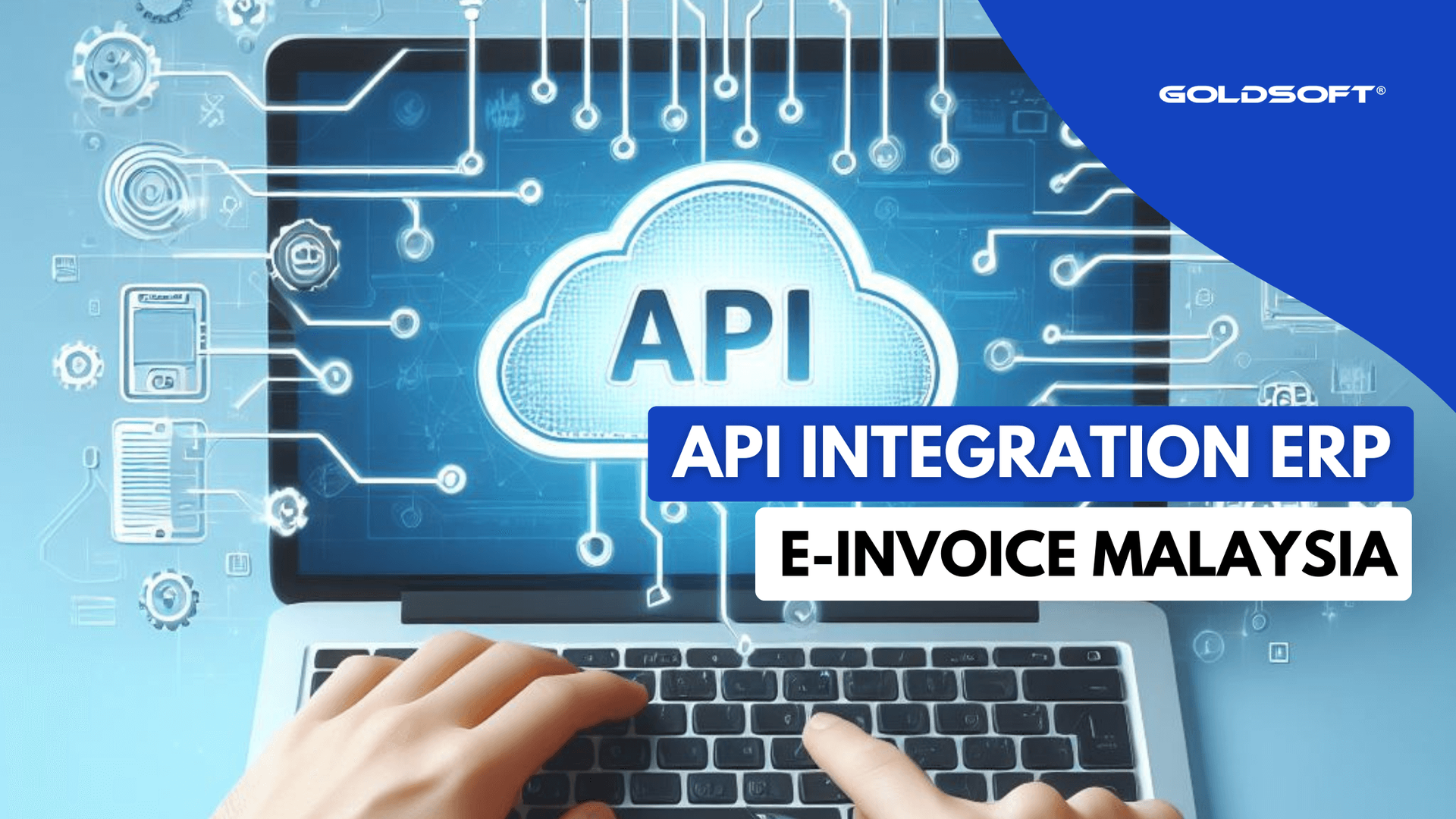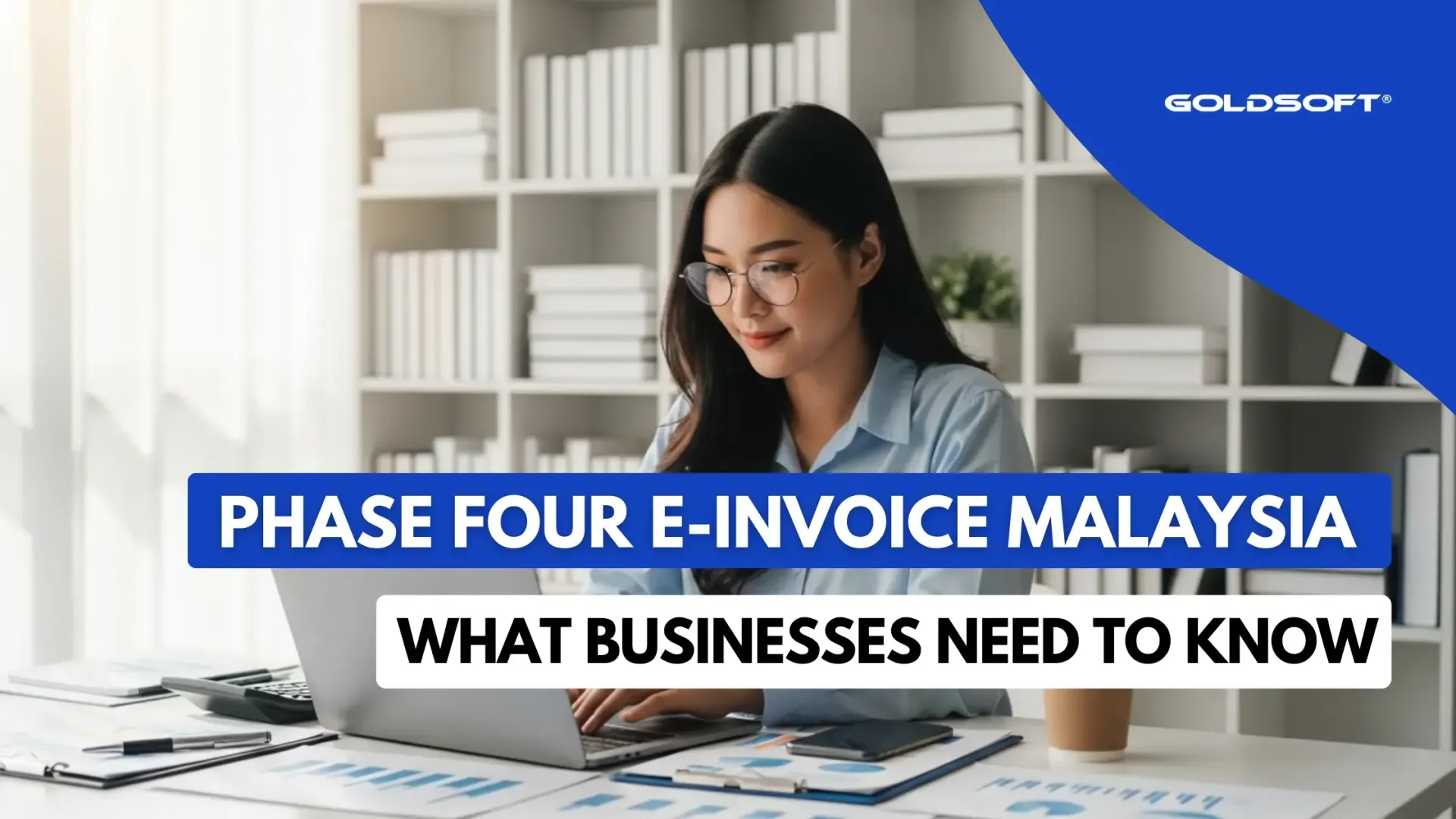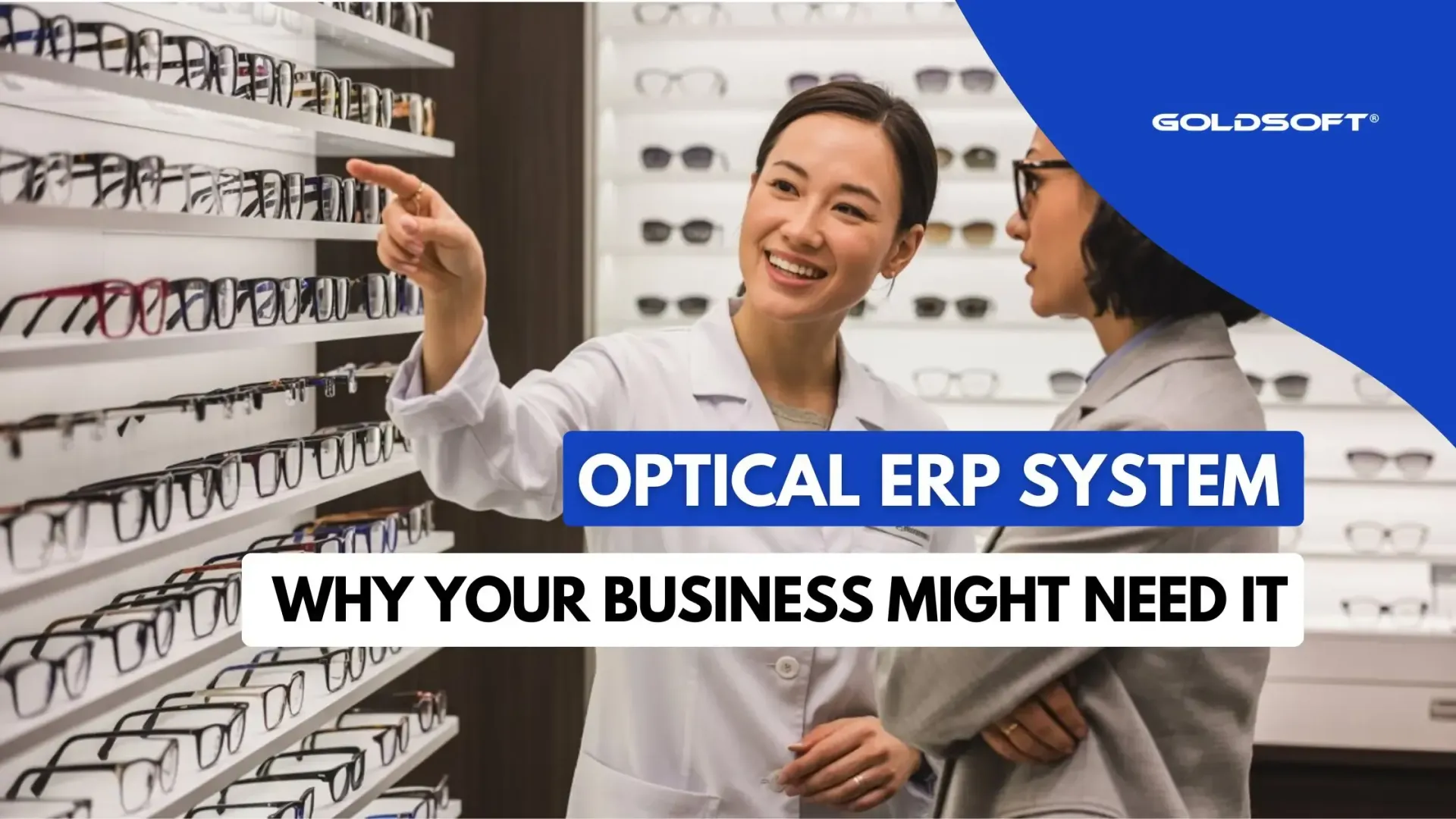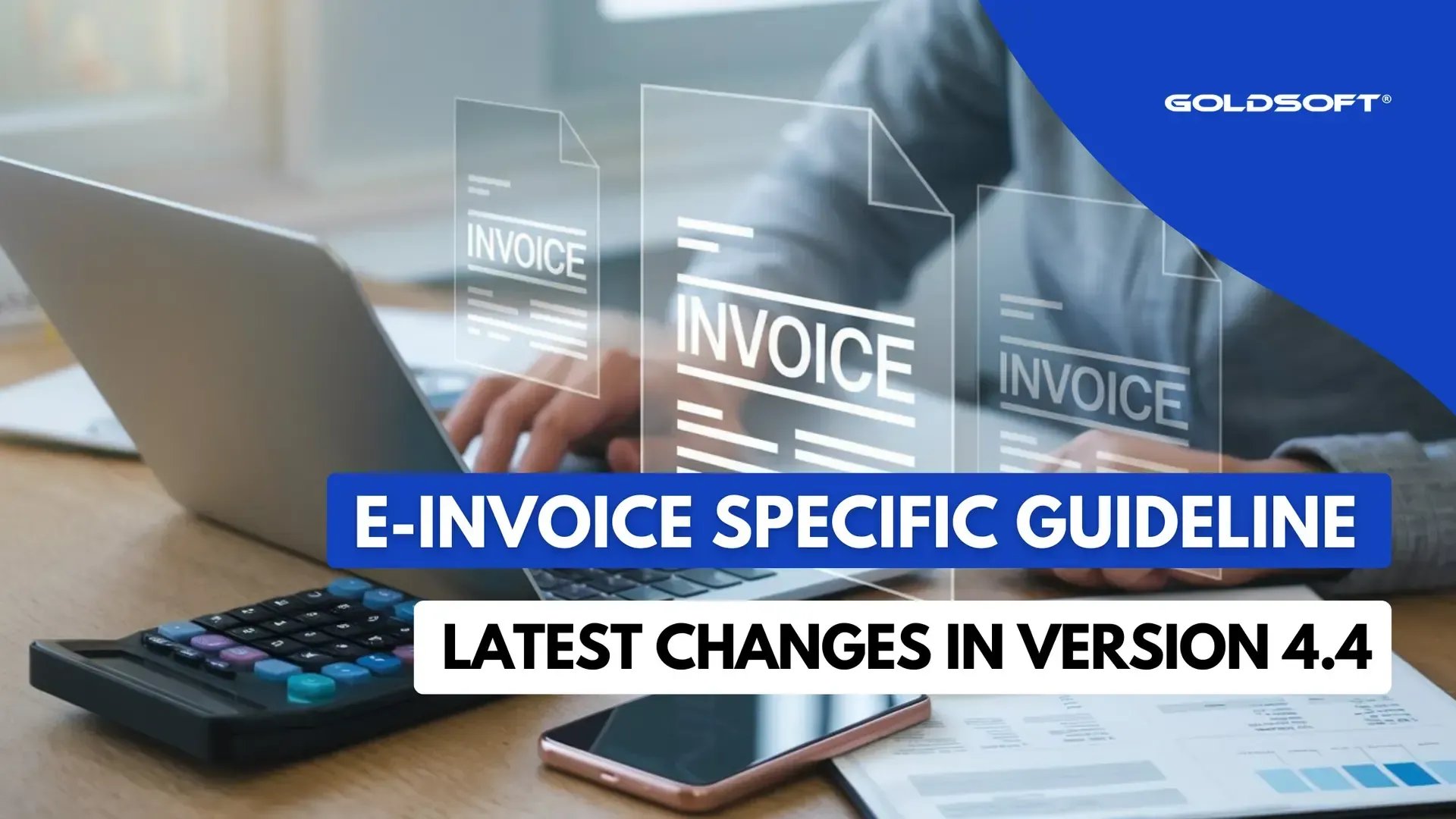What Is E-invoice API Intergration to ERP?
Streamlining Business Processes and Compliance Efforts through Seamless E-Invoice API Integration

An API integration acts as a digital bridge, allowing the ERP system to communicate directly with LHDN's MyInvoice Portal. This eliminates the need for manual data entry and ensures flawless communication when submitting e-invoices. Imagine it as a translator that converts your internal business data from the ERP system into a format MyInvoice understands, streamlining the e-invoicing process for Malaysian businesses, saving time, and ensuring efficiency.
This API integration to ERP (Enterprise Resource Planning) in the context of e-invoicing in Malaysia involves connecting your ERP system with the e-invoicing platform through Application Programming Interfaces (APIs). This integration facilitates the electronic exchange of invoices between businesses and government agencies. ERP systems, such as Goldsoft ERP for Retail and Trading, is an instrumental in integrating various business processes like accounting, inventory management, and sales management into a unified system.
Extensible Markup Language (XML) and JavaScript Object Notation (JSON) will be the formats for transmission of e-Invoice. There are 51 data fields required to issue an e-Invoice, categorized into nine (9) groups: Address, Business Details, Contact Number, Invoice Details, Parties, Party Details, Payment Info, Products / Services and Unique ID Number.
Benefits of ERP System Direct API Integration to LHDN:
- Automation:
Eliminate manual data entry for e-invoices. Once a sale is recorded in the ERP, the API automatically generates and submits the e-invoice to LHDN for validation.
- Efficiency: Save time and resources by automating repetitive tasks. This allows your business to focus on core business activities.
- Accuracy:
Reduce errors by eliminating manual data entry. The API ensures consistent and accurate information transfer between systems.
- Real-Time Updates:
Get instant notifications on the status of e-invoices submitted through LHDN's system.
- Improved Compliance: API integration simplifies compliance with Malaysia's e-invoicing regulations. Secure authentication mechanisms are implemented to safeguard data exchange.
Navigating the API workflow for e-invoice management involves a series of steps: creation, validation, notification, and distribution. Let's delve into each step in detail below:
Step 1: E-Invoice Creation
Upon completing a sales transaction, the suppliers will issue an e-Invoice. The e-Invoice will be auto submitted to LHDN with Direct API Integration for validation. The API ensures consistent and accurate information transfer between systems.
Step 2: E-Invoice Validation
The server of LHDN will validate the e-Invoice in near real-time. Upon successful validation, the supplier will receive a validated e-Invoice with a LHDN unique identification number, validated date and time, as well as a validation link. The identification number not only enhances traceability but also acts as a safeguard against e-Invoice tampering.
Step 3: Validated E-Invoice Notification
When the e-Invoice validation process is completed, both the supplier and buyer will receive automatic notifications from LHDN regarding the validation status of the e-Invoice. This timely notification process ensures that all relevant parties are informed of the successful validation of the e-Invoice.
Step 4: E-Invoice Distribution
After the e-Invoice is validated, the supplier should embed the validation link provided by LDHN as a QR Code into the e-Invoice, and share the validated e-Invoice with the buyer. This QR code allows the buyer to verify the existence and status of the e-Invoice via MyInvois Portal.
Upon successful validation, it becomes the supplier’s duty to furnish the approved e-Invoice to the buyer, including an integrated QR code. The QR code serves as a tool to verify the status of this e-Invoice via Mylnvois Portal.
Step 5: Rejection of e-Invoice
Scenario 1: Buyer Requests for Rejection (if necessary)
The buyer can request a rejection of the e-Invoice within 72 hours of the validation by LHDN. The rejection request should specify the reason for rejection, as well as the unique identifier of the e-Invoice. Upon the Buyer initiating the rejection request, a notification is sent to the Supplier. If the Supplier agrees with the reason provided, they proceed to cancel the e-invoice.
Scenario 2: Supplier Requests for Rejection (if necessary)
If the e-invoice contains errors or was erroneously issued, the Supplier can himself cancel the e-invoice within 72 hours of validation by giving valid justifications.
Step 6: Cancelation of e-invoice
Upon successful cancellation, the buyer will be notified accordingly. The whole process including rejection and cancellation must be done within 72 hours from the validation.
In case the rejection by buyer or the cancellation by supplier is not carried out within 72 hours, the e-Invoice cannot be cancelled anymore. A fresh e-Invoice (credit note, debit note or refund note) must be issued to rectify the error.
Example Scenario:
Vogue Couture Sdn. Bhd. (Supplier), a boutique clothing store, issues an e-invoice for the purchase of a designer dress and matching accessories made by Ms. Johnson (Buyer) through their online platform. The e-invoice is automatically generated and sent to Ms. Johnson's registered email address upon completion of the transaction. Both Vogue Couture Sdn. Bhd. and Ms. Johnson receive notifications confirming the issuance of the e-invoice. Ms. Johnson reviews the e-invoice and has 72 hours to request any corrections or raise objections if discrepancies are identified.
Step 7: Storage of e-invoice
All validated and accepted e-Invoices are stored in IRBM's database, and taxpayers are advised to retain records.
Steps 8: Reporting Services for Taxpayers
Both the supplier and buyer can request and retrieve the e-Invoices via MyInvoice Portal for inspection, including the invoice date, amount, invoice status, and other relevant information.
Need help on e-invoicing? Goldsoft is here to assist! We can help address your current e-invoicing needs. Contact us at 603-2732 8833/ 016-6611086 or fill up the form below to discuss how we can provide an e-invoice-ready ERP solution to ensure a smooth and efficient transition.
How Goldsoft can help you:
-
Option 1: E-Invoice Ready ERP SolutionList Item 1
This solution direct connection from Goldsoft ERP system to IRBM's MyInvois Portal:
- Client utilizes Goldsoft built-in e-invoice compliance ERP/ POS system.
- We directly transform the invoices generated from Goldsoft ERP system to XML or JSON, send it to the IRBM portal via API, validate and return it with a unique ID and QR code, and send the final invoice to the buyer.
- Client is able to track and monitor e-invoice submissions, validations, and statuses in real-time.
-
Option 2: E-Invoice Middleware Solution
This solution uses Goldsoft as middleware to connect client's existing software to the e-Invoicing network:
- Client's to continue using existing ERP/accounting system.
- We collect information from client's existing system via API, transform it to XML or JSON, send it to the IRBM portal via API, validate and return it with a unique ID and QR code, and send the final invoice to the buyer.
- Client is able to track and monitor e-invoice submissions, validations, and statuses in real-time.
Share
Recent Articles





